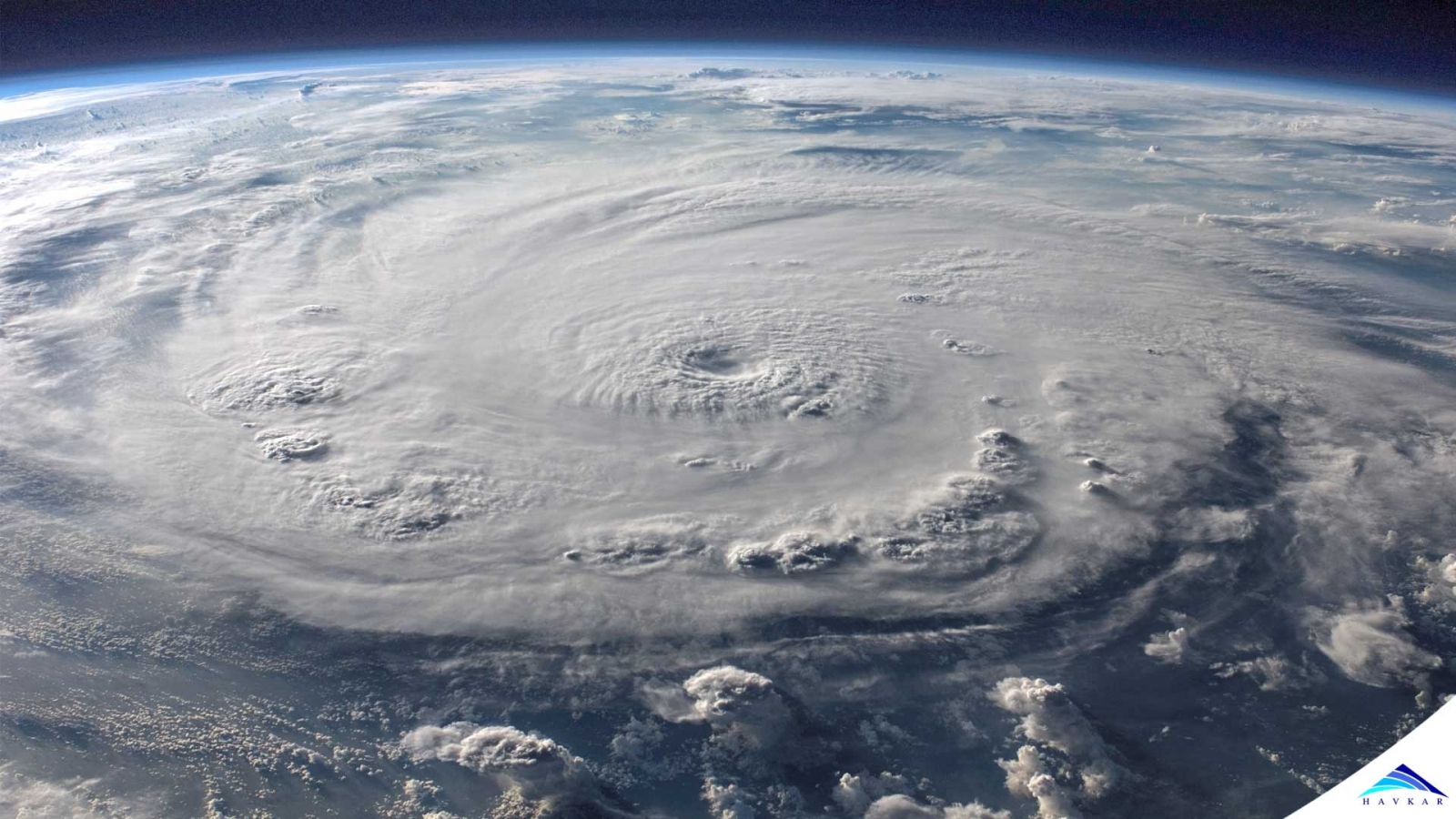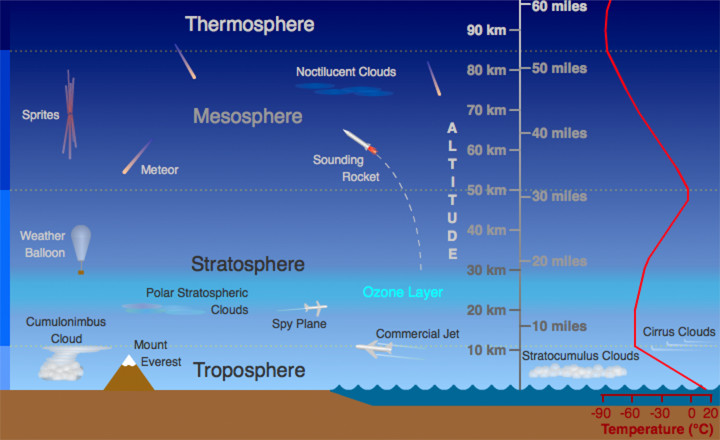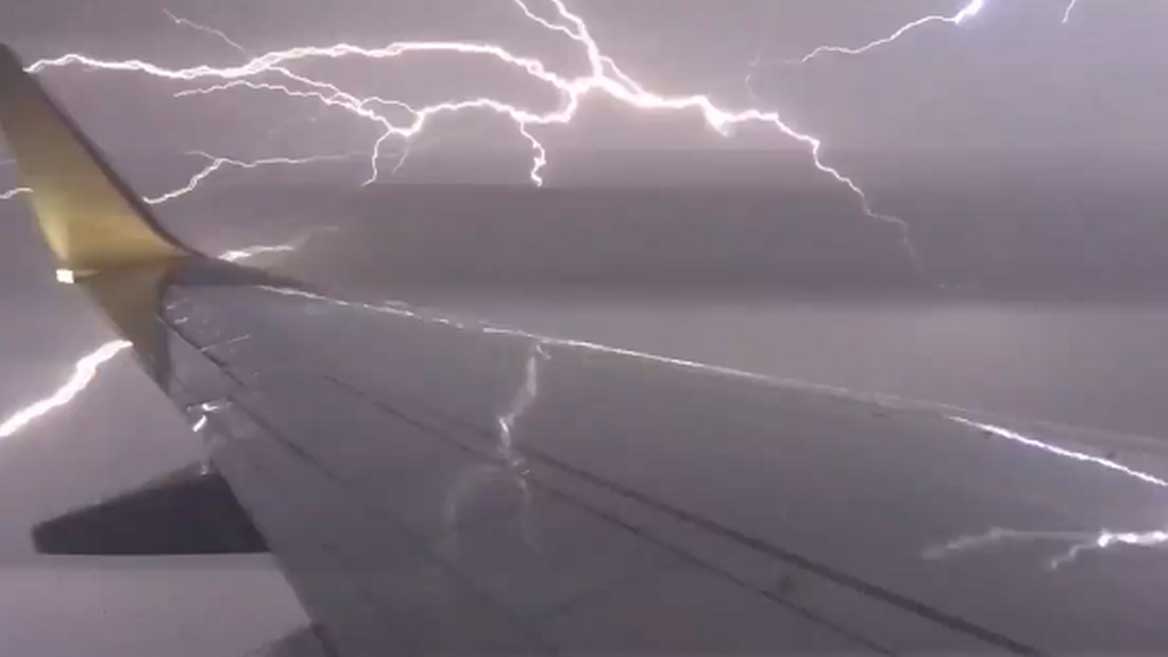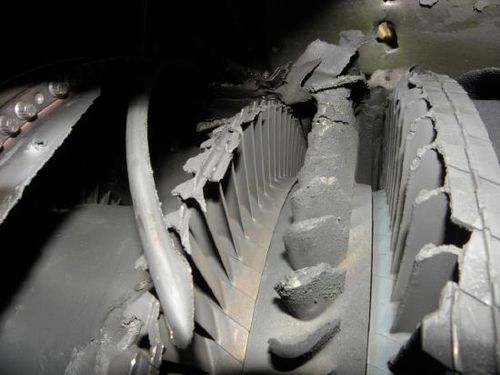
The term meteorology derives from the Greek “meteoros (μετέωρος)” that is phenomena that take place above the earth's surface. Meteorology is the study of weather and the meteorological phenomena are observable weather events in the air.
Most of the aircraft fly in the Troposphere, which is the part of the atmosphere where the main meteorological phenomena occur and some of these can be really dangerous for the flight safety. If the phenomena that happen in the atmosphere are of a certain importance, it is important that the pilots know the meteorological phenomena to take over their air navigation.

The main meteorological hazards for an aircraft during a flight are: turbulence, wind-shear, ice accretion, thunderstorm and hails.
Turbulence:
Turbulence is an irregular motion of the air characterized by strong currents. It can be classified in a scale that is divided into light turbulence, moderate turbulence, severe turbulence and extreme turbulence. Before entering a severe turbulence, the pilot will try to divert the route slightly, to avoid the area and minimize the inconvenience to passengers. If a pilot encounters strong turbulence, he normally will inform the other pilots who are flying on the same route via radio or ATC communications, so that they can avoid the turbulence area.


Pilots know the presence of turbulence through weather reports and in-flight warnings. Turbulence can be a serious hazard, especially during take offs and landings, and it can cause serious damages to passengers, crew and to the aircraft structure.
Wind-Shear:
Wind-shear is a strong wind hazards with great variations of the speed and intensity, characterized by up and down currents and strong winds. Wind-shear is described as vertical or horizontal wind shear, and it can be considered the cause of turbulence.


Windshear effects on flight path on approach. Microburst reduces airspeed and lift at normal attitude which results in pitch down tendency to regain airspeed.
Wind-shear is formed and observed mainly during a front, where there is a difference in air temperature, during a thermal inversions, near mountain ranges, and often near jetstreams (both at high levels and low levels). Wind-shear can be a serious hazard during the take off and landing phases.
Ice Accretion:
The formation of ice on the wing of an aircraft is very dangerous because during flight it increases the aircraft’s mass and it changes the surface of the wings causing a decrease in lift. In some special cases, it can make the aircraft stall.
Ice formation happens when there is the presence of clouds at low temperatures. Most aircraft have an ice prevention system that can solve this problem in moderate ice formation. The pilot operates the de-icing system by means of a button inside the cockpit and the system will defrost the ice.
There are two different types of this system that can be mounted on aircraft, the first one defrosts the ice using electric heating elements and the second one defrosts the ice with a pneumatic system that can gouge until the ice breaks.
Pilots generally activate the anti-ice system before entering an area where the formation of ice is expected, but it can also be used to remove the already formed ice. Before taking off it is also possible to ask for de-icing which consists of spraying different substances on the aircraft’s wing in order to prevent ice formation.
Ice formation can be dangerous inside the clouds, during the climb, the descent and the cruise phases of a flight.
Thunderstorm:
A thunderstorm is a local atmospheric phenomenon associated with cumulonimbus clouds (CB) or towering Cumulus (TCU), lightning, thunders, wind gusts, showers of rain or snow.

Flying in a storm must be avoided, because it is very dangerous for an aircraft, and can cause icing, poor visibility, strong turbulence and the presence of electric discharges. Thunderstorms must be avoided during the flight route and pilots must fly away from it, requesting air traffic control to move off the flight route. Thunderstorms can cause serious damages to the aircraft.
Hail:
Hail is made up of irregularly shaped pieces of ice, that come together with other frozen particles and become bigger and heavier, after which they fall into hail form. Hail is often found in thunderstorms or nearby and it is present in the lower and medium levels of a cumulonimbus (CB). The hail size depends on the strength and amplitude of the ascending current and how much water is in the cloud.

It is advisable to never fly under a storm because there is strong descending currents, turbulence, strong rain and hail. Larger hailstones (more than four centimetres in diameter) can significantly damage an aircraft during a flight.
Volcanic Eruption:
Volcanic eruptions can be really dangerous, especially for the aircraft engines, and they must be avoided. When there is a volcanic eruption, it is notified by a report called ASHTAM, which provides information about the status of the activity of the volcano and the location and movement of the ash cloud.
There are other weather phenomena that reduce visibility and that can affect the flight safety, such as: fog, sand-storms, snow-storms, dust-storms, and heavy rainfall.
The pilots are well trained and they know the meteorological hazards they face to, they are able to identify which are dangerous and which not.
There are many different type of meteorological reports that pilots can consult in order to know which meteorological phenomena can encounter on their route. These reports, depending on the type, are constantly updated to facilitate the pilots to avoid the dangerous phenomena.
In some cases, due to the poor weather conditions, it is not possible to take off or land. In case of a takeoff, the pilots must wait until the weather conditions improve, whereas, in case of a landing, pilots may be forced to divert to another airport.
Safety comes first and it is really important that pilots know well all the meteorological phenomena that can encounter during flight.


Some pictures of volcanic ash that causet damage over engine parts.